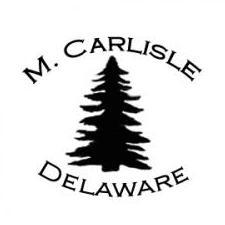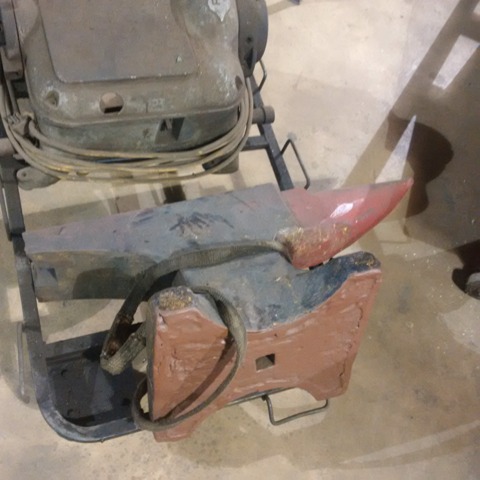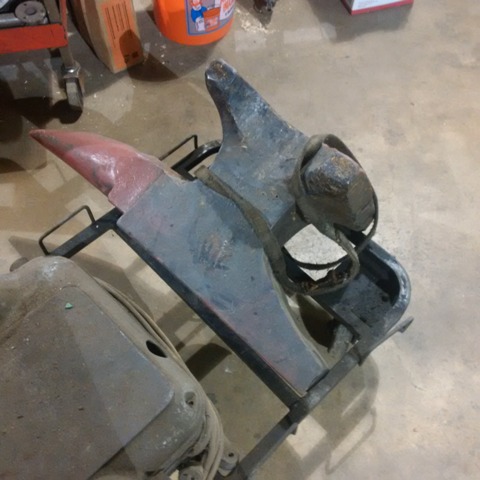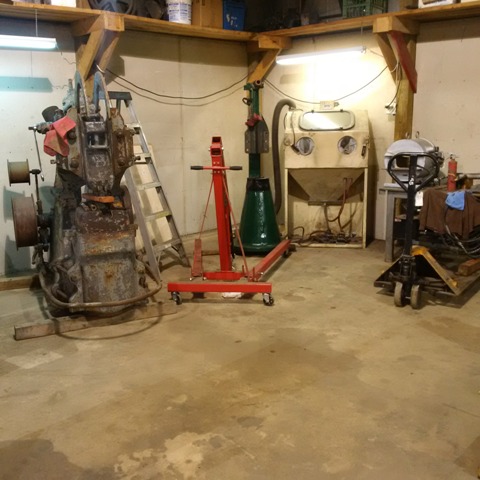-
Posts
198 -
Joined
-
Last visited
Content Type
Profiles
Forums
Articles
Gallery
Downloads
Events
Everything posted by CMS3900
-
I just didn't know if there was some sort of unwritten anvil flowchart like: From Best to Worse: New Quality Anvils (Refflinghaus, Fontanini, Nimba, Kohlswa, Muskovic, ect. ect.) Modern out of production anvils like the Tom Clark, Fisher or German Pattern?, ... and on down the list until you get to a large rock.
-
Seeing questions like this pop up, along with a increased frequency of people hopping on the forums posting anvils for sale with what I would consider high prices, I have to ask is there any benefit at all in purchasing a used anvil that is almost equal to the cost of a new one? Looking at the anvil as a working tool only, ignoring historical value, are there any anvils out there, not currently in production, that are some how better than whats currently available to smiths from quality anvil retailers? Size, shape, features, metallurgy?
-
Great Video, I was hoping to see this one day after seeing it in the background of the Chambersburg Video. What did you use to make the mold for the castable? All of your curves look so spot on. Also, did you cast around the ribbon burners in place and then cast, or cast around a stand in. Thanks, Morgan
- 13 replies
-
- xl forge
- large gas forge
- (and 3 more)
-
Not to my knowledge, I think he just ordered something else. I doubt it was a counterfeit because it came from MSC or McMaster. The only reason I mentioned him was to point out that in my observation the "Nicholson's is made in Mexico therefore it's junk" idea stems from, in large, people using the using the wrong file for the wrong job and then blaming the file. Once you get any metal past the hardness range the file is supposed to cut its performance will be low or non existent, and will probably roll the teeth. That's exactly why your right about only using Nicholson's machinist files for metal work, because their harder. The tool steel the guy in question was de-burring was work hardened, and exceeded the files hardness, if he was using a INOX file, he would of been fine because it's harder then a general machinists file. For wood I would love to have a few Liogier hand stitched rasps. https://youtu.be/gQ09O3d8y9Q I have a few Grobet needle and rifflers and have never had a issue. MSC stocks them and they pass their internal QC. I'd be willing to buy one of the saw files and check it out. It would be interesting to see what the HRC of it is. Which part number were you looking at?
-
I would give a +1 to PFERD, and Grobet USA. I spent the coin a while back and bought a PFERD Corinox stainless steel file, and wow. It's like a laser at 70 HRC. It really helps tuning up hardened knife blanks. Nicholson has gotten a bad rap as cheap terrible files, but I really think It depends on A: what your filing and B: what you expect from the file. I have had decent results with recently purchased Nicholson's, as well as the MSC "Import" brand, filing mostly 1018 and some 4140. Meanwhile, another machinist friend of mine bought a brand new 16" Nicholson Mill file and folded the teeth over like a brush with the first use trying to de-burr some tool steel.
-
That's undoubtedly great fuel economy. If you did the reverse math figuring everything electric motor drive, powered by a diesel generator, you couldn't touch that economy. That's also good to know about the RPM, I hadn't thought of looking for a engine with a specific RPM range. Can't wait to see more pictures and information.
-
I had just found the walk-through of your shop on you tube the other day. Amazingly beautiful. If I ever follow through and build another building to move my forging equipment in, I plan on it being line shafted. What is the backup make and break that you have next to the Reid? Could you tell us about the journey of acquiring all the equipment, line shafting and electrical system? How much fuel does the Reid burn in a month? On a side note, who is your supplier for all that nice flat belt? Thanks for sharing, it really is one cool shop.
-

reversable motor wiring HELP!
CMS3900 replied to territorialmillworks's topic in Machinery General Discussions
What model is it? Do you have a manual or a wiring schematic for it? What is fried in it? Pretty much anything that could be in that lathe should be available through Grainger or one of the electronics parts houses. -
Post vise vs bench vise usefulness is all in the application. Post vice distributes vibration down to the floor, but generally the jaws do not open parallel. The bench vise transfers vibration to the item it is mounted on, but the jaws are parallel, it also has a set of pipe jaws in it which is nice. The handy worker is pretty cool. Would be neat for demos.
-
I get it, its a touchy subject for a lot of folks, and it's hard to know what someone does or does not know over the internet, and what equipment they have. The fisher turned out well, lost no rebound that I can tell, and wasn't delaminted or anything before or after.
-
Hey Frosty, I had said it was different, I only meant that a similar amount of skill is required. To weld cast right, you need to have a bit of knowledge. To weld WI you need to have a bit of knowledge. I don't mind doing a bit of reading and practice to gain that knowledge. I used Rob Gunther's method, with 7018 at 400 degrees, with a hammer and needle scaler peen and then grind and polish after post heat. The issues with the Fisher were not deep, or extensive, but enough that I felt they needed to be attended too.
-
Thanks for the reply again Frosty, I had read from different sources that the 4" pulley would be a bit noticeable. I am hoping I can tune mine in to being able to have control like that. I plan on using 8 inch timber, after seeing and talking to other guys it seems the right height for me, 6 foot tall, where I am not bending over too much. I get what your saying about the welding Frosty, and no offense is taken. I have a decent amount of welding knowledge but my father has what I consider a exceptional knowledge of welding different alloys as well as techniques. We do a ton of cast iron repairs in our shop, using several methods; and while not similar to WI it looks like it takes a similar level of technique. I am not in a rush, and I love to research, and don't have a issue with buying the right materials to do the job right. I probably will use it for a while before messing with it, but it would be nice to know if its even worth messing with. For my fisher, it had some beaten sides and I took the time to preheat the whole anvil, weld, peen, grind, and post heat, following a amalgamation of information found on the net, from ABANA sources to forums and local chapters. I am really happy with it so far, and haven't had a single issue. Thanks for all the suggestions. I have some good local people I talk to, but I joined IFI to expand my circle and learn as much as I can. -Morgan
-
I understand what your saying Frosty, and if slowing them down a bit interferes with operation then I will turn them back up. The VFD's will give me two other important features, being able to run the machine at low speed after the rebuild to make sure everything is moving the right way, and help with motor starting. We run all of our equipment off a rotary phase convertor, and the soft start in the VFD really helps. I think the LG would be affected the most since it needs the speed to develop the force. I had read a couple places to make the drive pulley 4 inches instead of the LG recommended 3.5 so I guess I will wait and see how that works out too. Here's two pictures of the anvil. I plan on facing broke end square with my horizontal mill and then making a piece to be welded on, out of a decent alloy. Then once I am done I can true everything up, and mill the profile for the hardy. Eventually I would like to get a double horn, and sell this anvil, so knowing if it is going to hurt or help to fix it is good info. Also included is a pic of the hammers from a a month ago. I have move some stuff around since then, and the LG is almost back together. I have yet to set either hammer on wood yet. Thanks, Morgan
-
Hey folks, I was wondering if LG still did this, or if the email on their website was still the best way to contact them. I emailed them about my #100 machine, P678 over a month ago and haven't heard anything back. My machine has a removable sow block, new style rear mounted clutch, and motor mount on the lower right side; but still has the wrap around ram guide. Thanks IFI
-
Hey Frosty, Thanks for the reply. It will take some time to learn how to use them to their potential for sure. I also plan on putting them on VFD's and slowing them down a bit until my proficiency increases. As far as equipment I have scrounged together for blacksmithing I made a vertical and horizontal propane forge last year which I am considering changing and putting ribbon burners in, I have a Fisher anvil (150#ish?), a 400 lb anvil that is broke at the heel that I am told is a hay budden and I plan on fixing, a caulking vise that's missing the foot lever, and a unknown make post vise. I also made a whitlock-esq coal forge and have yet to hook my buffalo forge crank blower to it. Next equipment goals are a press and a ironworker. On the Machine Shop side we (my father and I) have 2 CNC mills, 2 manual mills, 1 CNC lathe, 1 small engine lathe, 1 medium sized engine lathe, two second op lathes, 3" horizontal boring mill, and a mess of other stuff.
-
Hey I Forge Iron. I am Morgan from Townsend, Delaware and I am a Machinist/Blacksmith. I got back into blacksmithing about a year and a half ago. I am 32, and I had previously done some blacksmithy in high school. I am interested in anything I can learn, but mainly bladesmithing, Flintlock gunsmithing, silversmithing, armor making, casting and bloomery, tool making, power hammers , and solid technique. I purchased a 150lb Bradley and a 100lb Little Giant last year, and am in the process of restoring both of them. I am a member of the Blacksmith's Guild of Central Maryland, ABANA, and hopefully the Mid-Atlantic Smiths Association soon.



